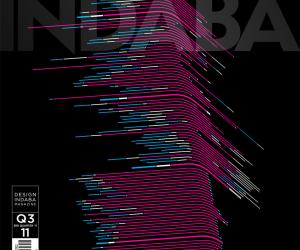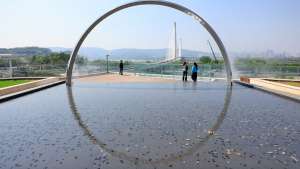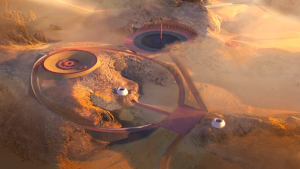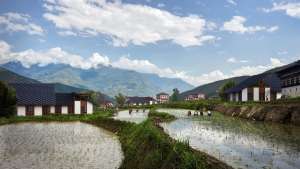First Published in
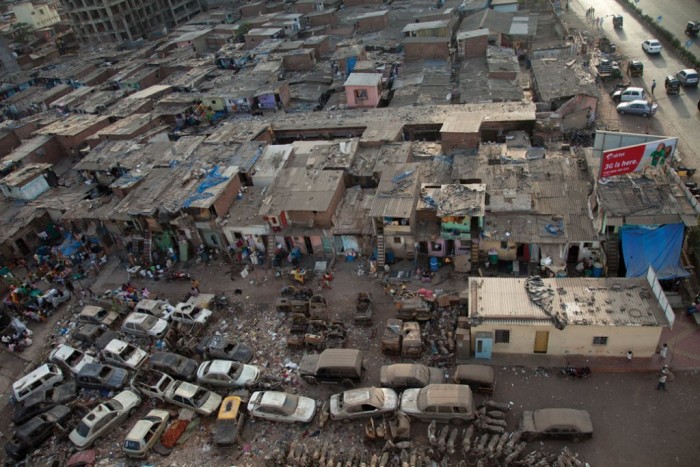
With a population of over 1 billion people, India is a country of contrasting stereotypes: Poverty and a seemingly unending chaos are as iconic as the show-stopping glamour of Bollywood, and the mystical humility of its age-old spiritual heritage. Although the second most populous country in the world, India has only the 10th largest economy, and supporting 15% of the world’s population on 2.4% of the world’s land has led to continually widening socio-economic inequalities.
In fact, step into the city of Mumbai and discover an India where the lights of Bollywood have obscured a gritty reality. With a population density estimated to be about 20 000 people per square kilometre, Mumbai is a city where poverty and riches share the same playground, and whose identity is an imitation of everywhere else.
“Mumbai is a young city that is emblematic of the shifts in growth of an industrial city. A city that is both a symbol of modernity and of the Third World,” architect Rohan Shivkumar describes hesitantly. This is one of many dichotomies that pervade the city of Mumbai and its 20 million population. Mumbai is the richest city in India with the highest Gross Domestic Product of any city in Asia and generates 5% of India’s GDP.
In contrast, according to the World Bank, Mumbai also has the largest concentration in India of people living below the international poverty line of US$1.25 per day. This is the greatest dichotomy to be found in Mumbai – the disparities between the social classes. Shivkumar points out that most of Mumbai is in a slum and only a small population of the city is able to live in what he calls “formal architecture”.

Anywhere but here
It is the formal architecture, of which only 35% of the population live in, that has not only created a disparity been the economic and social classes in Mumbai, but also been the root of the clashing identities that can be seen throughout the city. “The architecture of Mumbai has a tendency to imitate or want to be somewhere else,” Shivkumar admonishes.
Whether it is the housing projects or the high-rise buildings, there is often a creation of a different space, a space that removes itself from India, casting a new set of stereotypes on itself. These enclosed spaces include swimming pools and clubhouses with Grecian columns and Chinese roofs – a stark contrast to the dusty roads and handmade homes alongside.
Architects have played a pivotal role in creating this disparate landscape and Shivkumar has been instrumental in finding ways to contend with these archaic architectural traditions that have very little place in Mumbai. As deputy director of the Kamla Raheja Institute of Architecture and Environmental Studies in Mumbai, Shivkumar aims to re-examine architecture and education in India.
Challenging formal traditions
Shivkumar criticises architects’ inability to deal with the complexities of informal communities where 65% of the population now lives. He shows how there is a movement towards the marginalisation and removal of the informal to the periphery. “If we are dealing with the architecture of Mumbai, then informal architecture is an important aspect to the overall architectural aesthetic of the city. It is important to rethink architecture for a contemporary India,” he asserts.
The Dharavi slum is one such case in point. Situated in the heart of the city of Mumbai, Dharavi is one of the five largest slums in Mumbai with a population of over 1 million people. The population stems from the city’s expensive home rentals, the highest in the world. Instead, Dharavi provides affordable housing from as low as US$4 per month.
In late 2005, when parts of the city were being handed over to private companies to develop land in Mumbai, Dharavi was divided into five sections and a call was put out to international developers. As an undeveloped prime property hot spot, investors such as Lehman Brothers and Singapore’s Capitaland Ltd were quick to propose plans. Many of the plans put forward were aimed at creating glittering resorts, completely relocating the residents instead of creating a better living space. “The redevelopments didn’t cater to the complexity of the Dharavi community,” protests Shivkumar, clearly frustrated. “It is a community of many different languages groups and many different kinds of work. It is like an entire city.”
However, the 2008 economic crisis left many developers bankrupt, giving Shivkumar and his school a chance to find alternative solutions to the problem that would’ve eventually seen many inhabitants without homes. Together with fourth-year and graduate students, Shivkumar decided it wasn’t enough to just know about the slum, it was necessary to understand the community that lived there.
Mapping the informal
By going into Dharavi and engaging with the inhabitants, the students were able to see, some for the first time, the dire conditions many were living in. But they also discovered the intricate groups of networks between the 5 000 businesses and 15 000 single-room factories. Techniques that people used to build their homes, as well as informal systems of how they lived and how the community functioned, were discovered.
“Very often, these people come up with solutions to deal with spatial issues. Theirs is an architecture being assembled out of the material of everyday life,” the architectural activist exclaims. “But architects are unable to understand these informal systems and therefore deny that they even exist.”
Shivkumar and his students found that the people of Dharavi did want to see a change. Better infrastructure was at the top of the list along with a higher quality of life. Though, importantly, this didn’t mean that they wanted to give up the work they did. In fact, they wanted to continue building the myriad industries such as pottery and broom making, industries that generate over US$600 million turnover each year.
“We began to map roads through a specific area of the slum,” explains Shivkumar. “By doing this we were able to begin identify distinct communities.” The idea was to help create a means by which these industries could continue to self-develop and embrace a change, but on their terms. A change that functioned on both an economic and socio-economic level as well as on a personal, everyday life level.
By mapping the area, Shivkumar and his students were identifying already existing communities within Dharavi and by doing this were able to acknowledge these specific communities and their boundaries. When formulating a plan, they built boundaries that framed the communities as opposed to breaking them up. In this way, they were able to divide Dharavi into distinct communities that could evolve independently of each other.
By mapping the area, blocks were established where industries could be grouped according to manufacturing process and where they sold their goods. “For instance, the group that would make jeans are located along a specific road allowing those that cut the patterns to pass onto the ones that stitched them together eventually leading to retailers selling on the larger surrounding roads,” Shivkumar breaks it down.
By working with these communities and understanding the intricate nature of the networks, Shivkumar was able to begin evolving housing projects that acknowledged their different needs: “We created the planned sections, worked out the financial models and from this were able to create designs of different typologies and urban structures to fit each community, while still plugging into the greater fabric of Dharavi.”
Although Shivkumar brought his alternative plan before the state and was made part of a Committee of Experts (CoE), he soon realised that it was mere lip service and not about making use of the solution. Having resigned from the CoE, Shivkumar and the school are currently working with communities in Dharavi to evolve a viable alternative redevelopment that respects existing community boundaries and needs. “If this gets implemented, we will have demonstrated an alternative that emerges from the community and is not imposed from the outside,” Shivkumar looks eagerly to the future.

